Mountains and Mysteries
“There ain’t no barbed wire up here, and it was made for me.” - Rich Corraza, Alaskan

We had just come down from a four-hour, round-trip hike to Ptarmigan Lake in the Kenai Range of Southern Alaska. The total altitude gain was a bit under 800 feet, according to the digital maps on our watches, though the trail was rolling, muddy, and rocky rugged for the uninitiated. The accumulated elevation felt like twice that in my legs and lungs, though I was ill-prepared and wearing shoes designed for shuffling through airports and convenience stores. Alaska rarely forgives such alacrity, but I got away with it.
The mountains on the Kenai Peninsula draw more than just adventurers and tourist hikers, though. Their trails and often steep grades offer a perfect environment for training endurance athletes. People who live in Alaska tend toward fitness, which seems essential for survival. Hikes and trails are almost daily diversions. A visit to a neighbor’s house might turn into a few hours scaling the inclines leading to Exit Glacier or running an errand into Seward transforms into an excuse for a trek out to where Tonsina Creek empties into the glorious Resurrection Bay and on into the Gulf of Alaska and, finally, the Pacific. Maybe you get lucky enough to see an Orca breach on your lunch hour.
I was just on my second trip to Alaska and found myself more enthralled with its beauty than my previous visit. Words won’t work when trying to summon a description of the landscape and its allure. People who live there, though, seem drawn not just by the natural beauty but by the sense of adventure offered by living out a modern frontier ethic. The risks are real, too, and they are often enumerated for outlanders from the Lower 48. You may love Alaska, it is repeated, but Alaska doesn’t love you. Sprain an ankle hiking alone and you might freeze to death before rescuers arrive and you become protein for a predator like a bear. When you step out of your car in Alaska, they say, you step into the food chain. A flat tire on your vehicle while driving the right road at the wrong time might force you to confront your mortality if cold and snow come over the mountains in too much abundance.
Daily life offers a list of sufficient challenges without looking for more, but people often choose to make existence increasingly more arduous than what is possible with modern living. There are still idealists moving up into the back country, building cabins without running water or electricity, hunting, and fishing through the long dark of winter to provide for themselves and their families. The relative simplicity of that existence, without traffic lights and gas stations and big box stores and billboards and fast-food franchises, seems, however, to be diminished by a different kind of daily grind when living off the grid. Lacking proficiencies with a rifle or a rod and reel, you will get very hungry, but the true Alaskan, converted or native, wants to get food by their own hand rather than stopping at Costco.
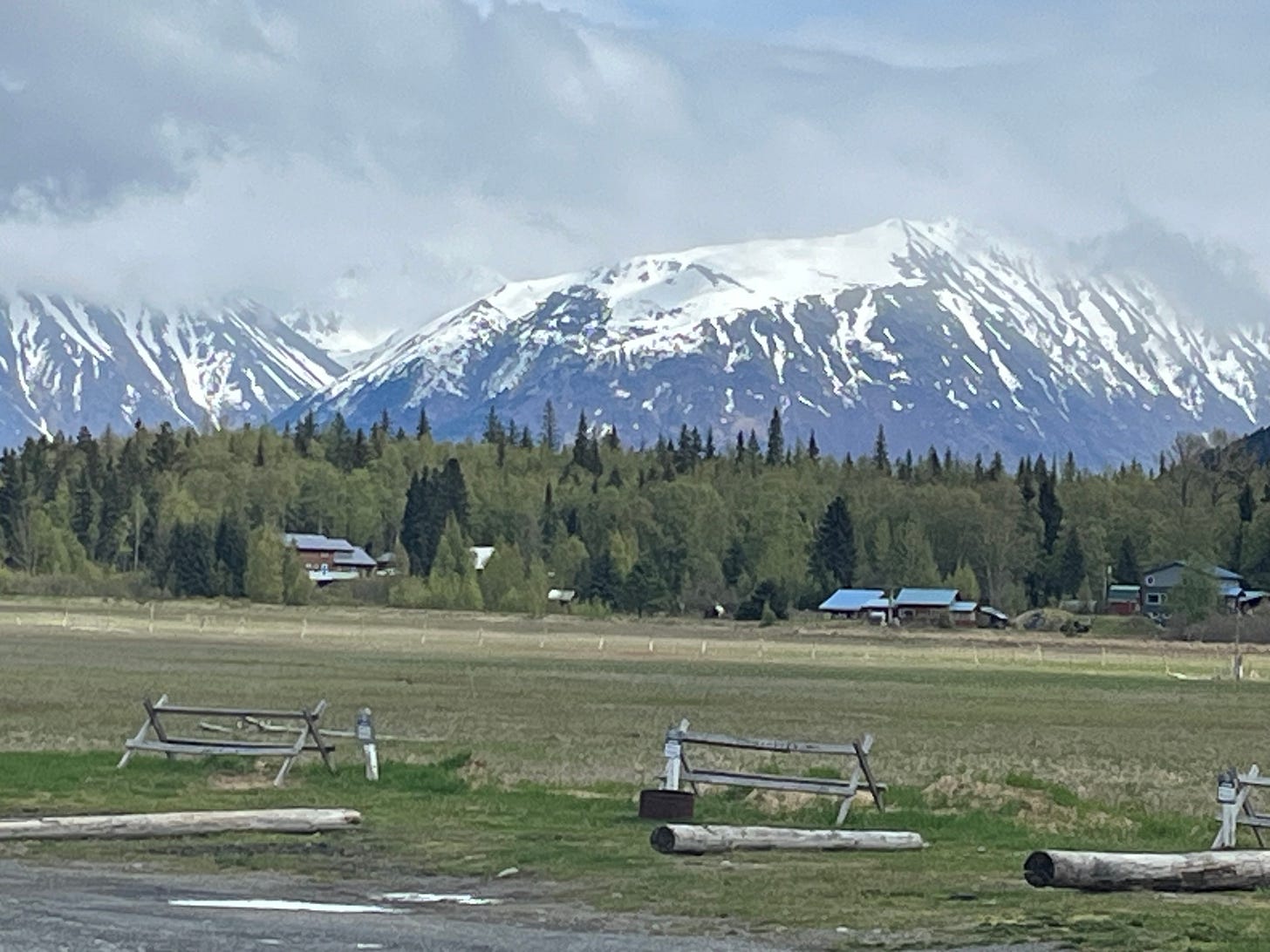
The mountains, though, cannot, and will not, be ignored. That does not mean, however, they must be challenged. Their mere presence seems to suggest to certain people that they must be conquered, not to make way for roads and tourist hotels but to prove you are worthy to live among them, have them as the backdrop to your life, or even offer a template to frame memories and dreams. Mountains can also offer up sporting activities, a notion that might suggest skiing or driving around a snow machine, maybe rock climbing, but the most glamorous endeavor in recent years has become mountain running.
And because it’s Alaska, even that can prove deadly.
____________________________
When we came down out of the mountains in the Chugach National Forest, Doug, Kelly, Joe, and I encountered Kara Troglin at the trailhead to Ptarmigan Lake. A diminutive entrepreneur and yoga instructor from Texas, she was making the 120-mile drive to Anchorage for business. She stopped enroute, however, to do a training run up the trail to the isolated lake.
“I’d like to do it in 80 minutes,” she said. “I think I can.”
“Nine miles of mud and rock and root tangles and that climbing?” I asked. “That would be quite a feat.”
“Yeah, but it’s a good training run for the race.”
Troglin wore a vest with a can of bear spray, a water bottle, and a light pack, presumably with snacks and a phone, though we found no cell service on our march up. She appeared, like anyone else would, insignificant on that epic landscape, an impression that was as striking as the fact she was completely unintimidated by whatever she might encounter. The contest for which she was training was almost certain to ask more of her physically than any other athletic feat she might have tried during her 34 years.
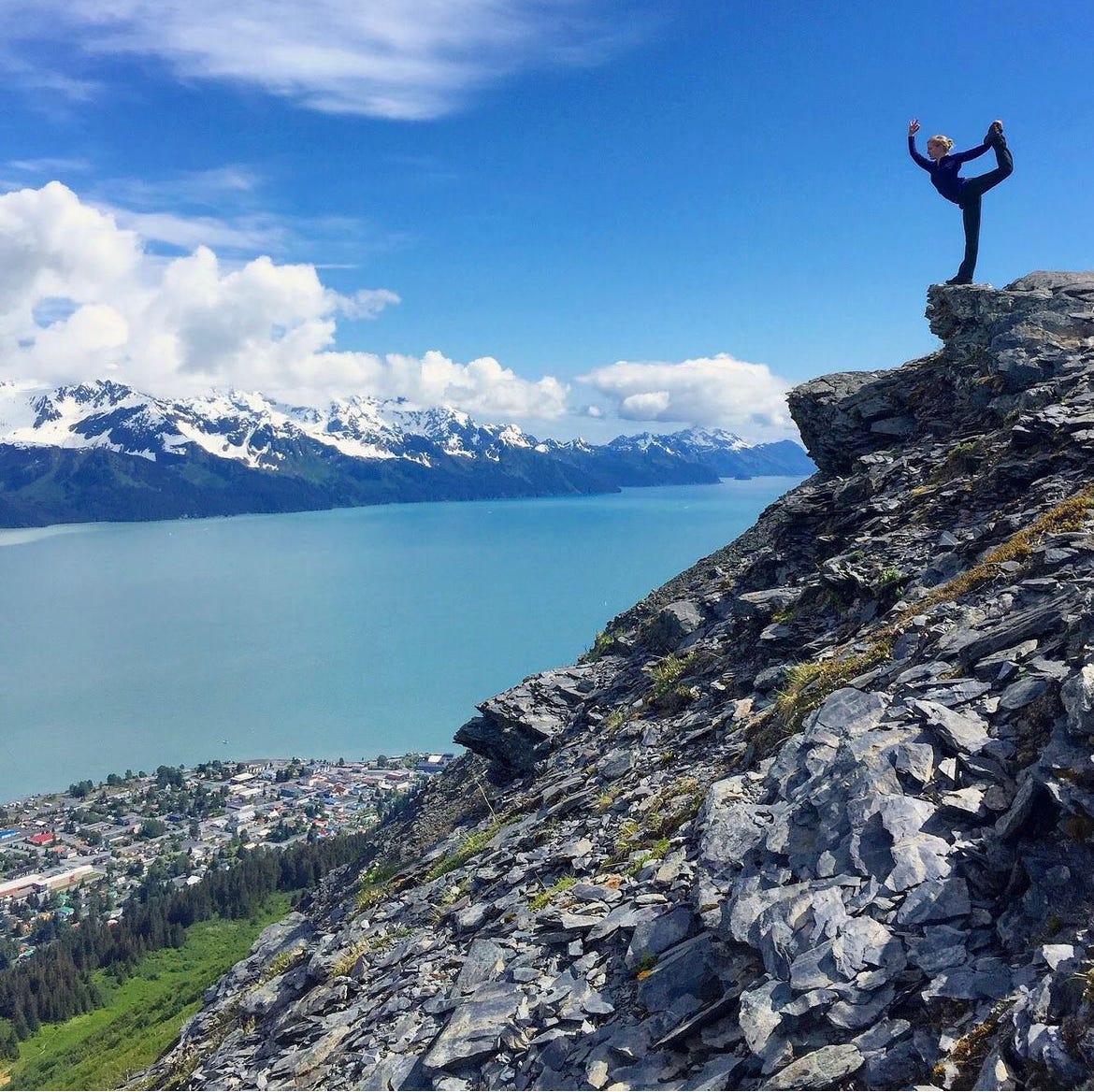
The Mount Marathon Race, which is set in Seward, is more of a near-vertical scramble up a mountain to 3022 feet in elevation, and then a mostly uncontrolled slide down through talus of slate and scree to get back to where the race started in the middle of the little town. Reports indicate that the overall incline upward averages a 38 percent grade with some sections as steep as 60 percent. Depending on the route a runner chooses the distance from start back to the finish is 5000 meters, or about 3.1 to 3.4 miles. Many of the contestants come down the mountain spattered with blood; some break bones, dislocate shoulders, and one runner just permanently disappeared.
“I don’t think, at this point, we are ever going to know what happened to him.”
I was talking to my Seward host, Doug Wight, a 74-year-old triathlete who is preparing for his fourth Mount Marathon Race on the Fourth of July.
“He was last runner up the mountain, and he was only a few hundred feet from the race point turnaround. Doesn’t make much sense for him to not come down, but this is Alaska.”
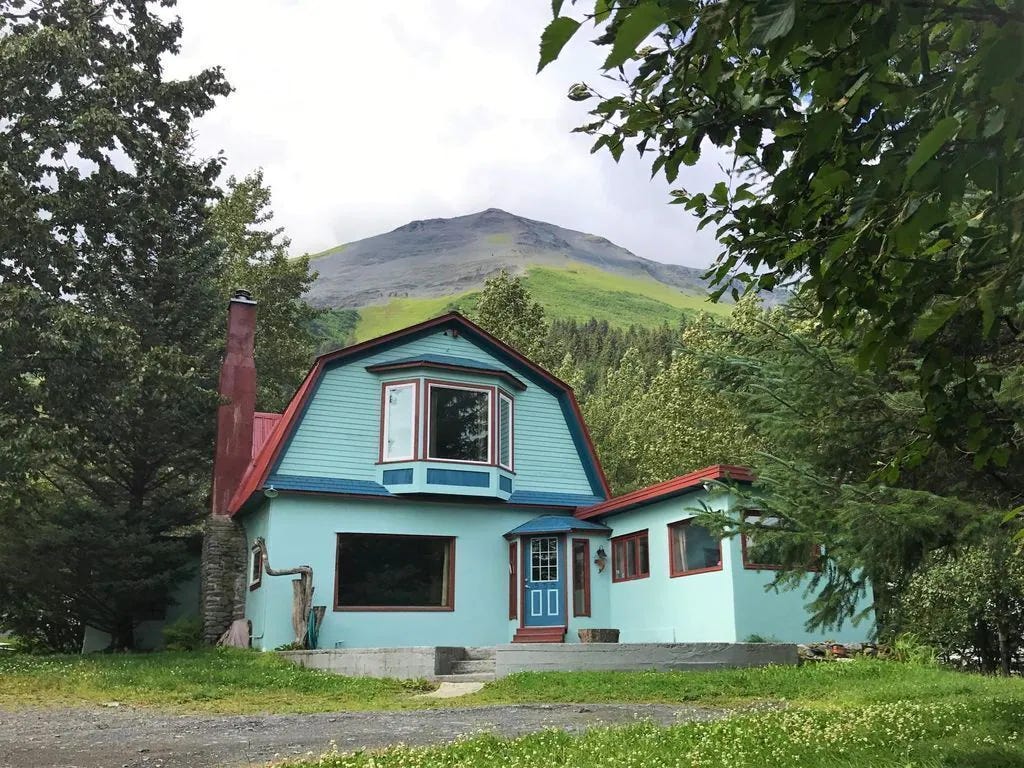
Wight’s Brownell Homestead Inn has become an unofficial gathering spot for Mount Marathon racers to hang out with friends and, when he is not competing, Wight operates a spray and water station to keep athletes cool as they pass by his property on race day. He has competed in dozens of triathlons and became fascinated with the Mount Marathon contest because of its unique, short, and brutal course.
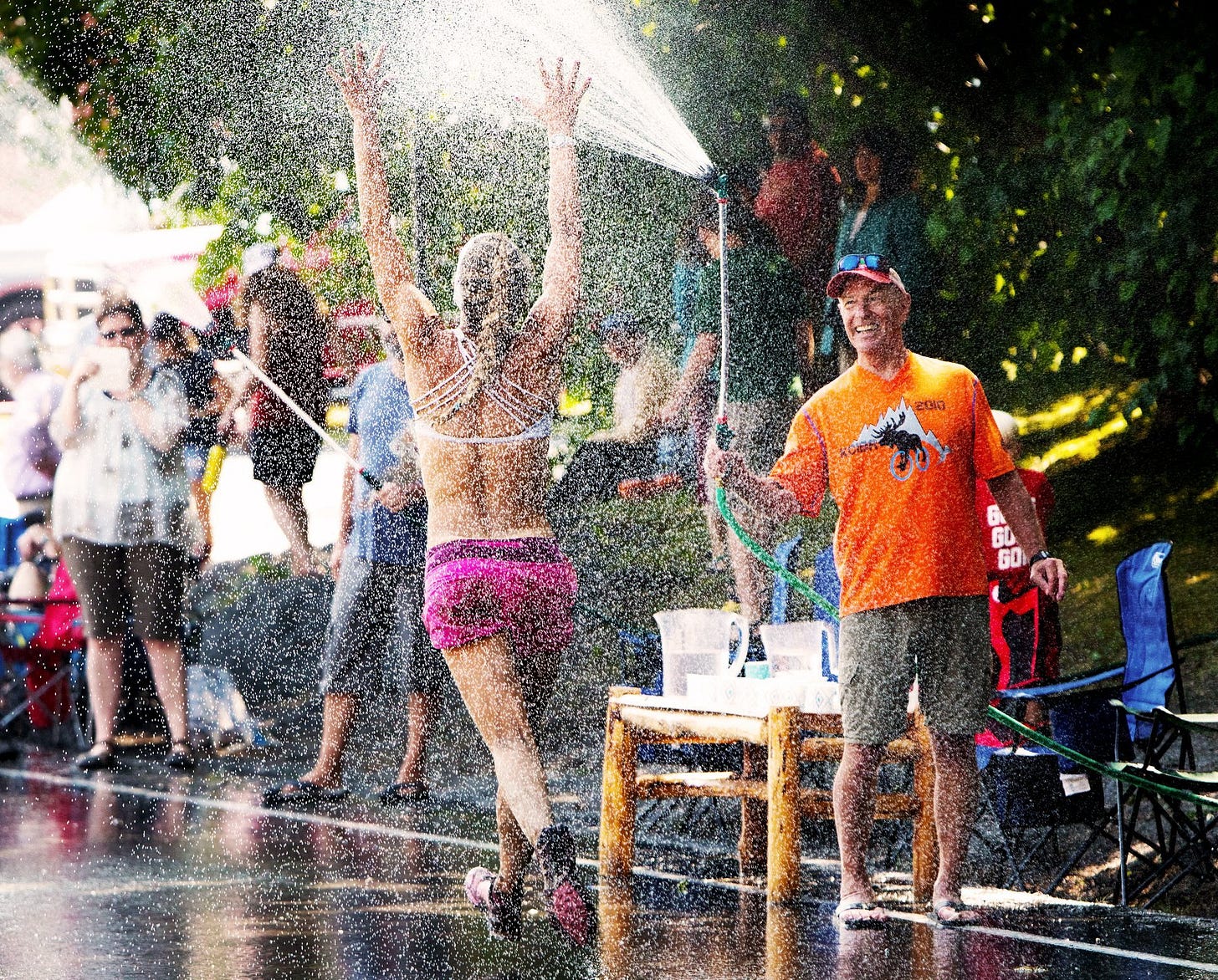
“The town and the race promoters call it the toughest 5k run on the planet, and if you make it all the way up and down, I think most runners would agree with that description. You really need to be prepared for this thing.”
Which might be why Michael LeMaitre was never again seen alive. He was 65 years old when he went up Mount Marathon for his first and only time in 2012, an egregious sin among the Seward locals. Before every race, a briefing is conducted, and contestants are told to go home if they have not previously gone up to get a sense of the impending challenge. LeMaitre ignored the advice but that was apparently in keeping with his personality. An Alaskan who was born out of place in New York, he was known for a love of outdoors adventures and had spent all his adult life with his wife and children, boating, hiking, camping, cross country skiing, fishing, crabbing, sailing, and running through Alaska’s wild country. Mount Marathon seduced him with its challenge, and then it took him away.

Even with a lack of preparation, LeMaitre’s disappearance is illogical. The weather was cold and rainy that day but there were thousands of spectators and hundreds of runners. Much of the race could still be observed from Seward’s streets, and a course marshal spoke to LeMaitre just before the runner approached the race point turnaround. While the race official went down the mountain, he expected LeMaitre, the last soul on the trail, to be right behind. Instead, he slipped into the unknown and became a dark legend on a day that is Seward’s biggest celebration of itself and the Alaskan lifestyle.
There are various theories, but they all lack proof. Military helicopters with infrared cameras and scanners were flying within hours. There ought to have been some heat signature, even if he had collapsed and died on the mountain. Getting attacked by a surprised bear has been contemplated by people wanting to solve the mystery, but the choppers would have likely seen the animal on scans and there would have almost certainly been scattered organic material. LeMaitre also suffered from glaucoma and had a narrow field of vision, which might have caused him to miss the race point and stray off course, even fall in a crevasse and remain unseen. There are no such geologic features prominent on the race trail, though, and he would have had to plod on into the darkness and a bowl that connects to another mountain to be exposed to other unknown dangers.
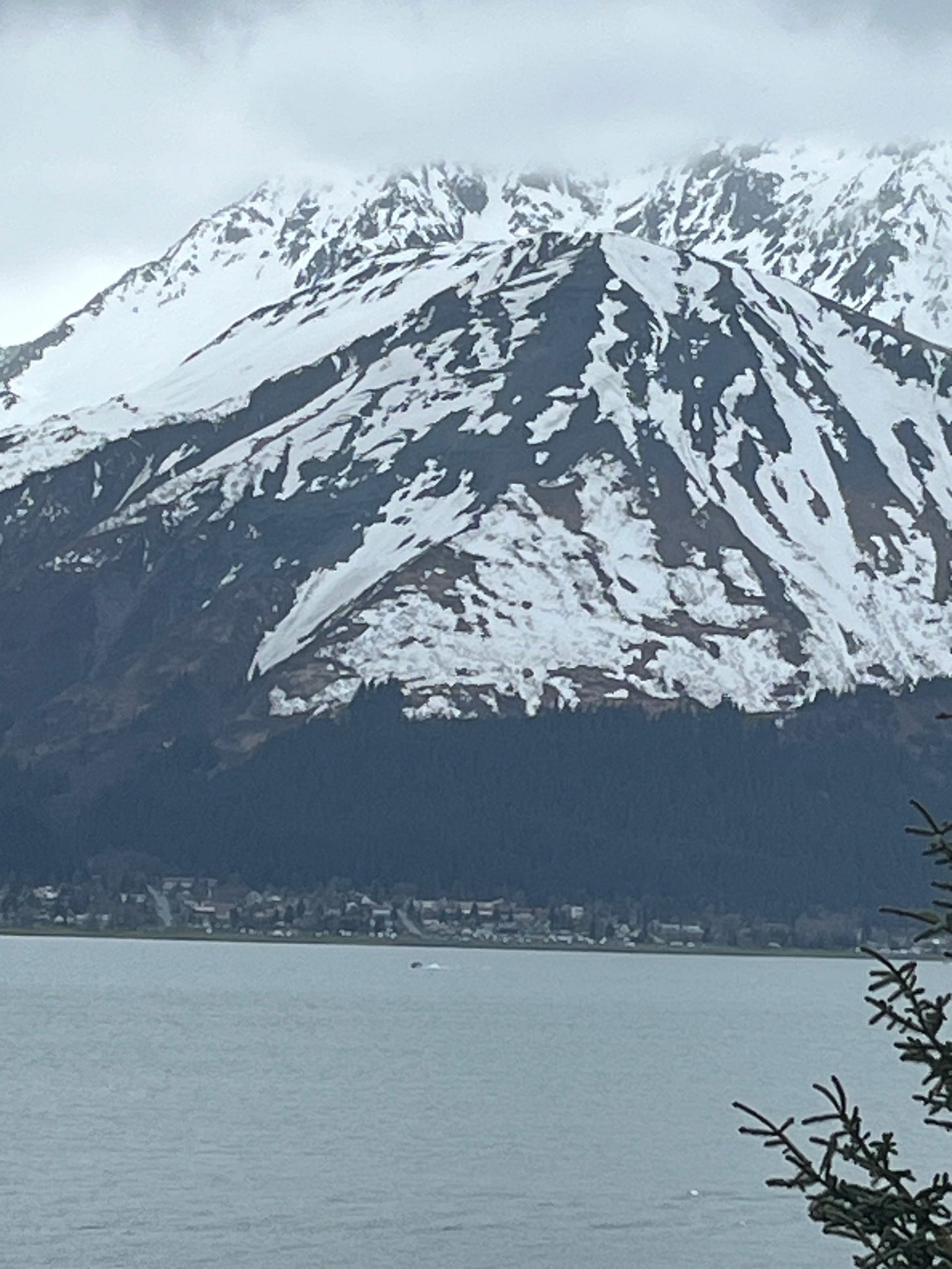
People have died on that mountain, three hikers in the last 25 years, but until LeMaitre, no one is known to have disappeared. His decision to go up might have appeared capricious given his lack of readiness, but this was not an irrational man. He possessed a Ph.D. in business administration and was very involved in the Anchorage community, where he lived with his family. LeMaitre was a hospice volunteer, offered his writing talents at the Air Force base to help service members transition to private sector jobs, and counseled children who had been orphaned in the 9/11 attacks. A man in constant motion, he always had the ability, according to his friends and family, to make things work out. When he went missing, though, it was in freezing rain while he wore running shorts and a tee shirt, and not even the most sophisticated infrared technology found a trace he was alive just a few hours previously. His absence was so complete from his life that it feels almost as if he never existed.
Life, though, goes on. In the mostly gray skies of the Kenai at this time of the year, Mount Marathon appears to brood above Seward. The snow is melting slowly and the clouds swirl around the face and obscure the race point turnaround. There are other higher and more dramatic peaks in every direction, but Marathon has defined the energy and optimism of Seward since the first official race was won by Harvey Karstens in 1915. Runners have confronted Mount Marathon every year since, except during World War II. With hardly six weeks left until race day this year, training on the course is more treacherous than usual because of lingering snow and mud. Getting to the top is mostly impossible, even up the old jeep trail with its switchbacks.
The Texan, Kara Troglin, though, has no apprehensions. She knows Mount Marathon can break people who throw themselves too hard against it, just like any place in Alaska, but she plans to be fit and trained to make certain she completes her first race. In fact, her relationship with the mountain, and the community of Seward, has been healing, and she thinks her first race trip up the mountain will only strengthen her positive perspective.
“I’ve had challenges and trauma that have brought depression,” she said. “For me, being in Seward changed my life. There is a deep connection to the community, the nature, forests, mountains, the ocean, and the people. I think of Seward as family. Having lived with depression, though, I look at Mount Marathon every day, in all different seasons and weather and the mountain is still there and I think it inspired me to overcome my personal challenges, and honestly, I feel safer on a trail than I do in a big city surrounded by people. I’ll be ready for the race.”
A decade has passed since runner Michael LeMaitre disappeared and became both a myth and a mystery. Organizers of the Mount Marathon Race still issue stern warnings to potential competitors, but Seward has no authority to stop anyone from going up that mountain, even on race day, and that includes a man with a Ph.D., a lion’s heart, and great enthusiasm for what it is to be Alaskan. LeMaitre, like Seward and Alaska, know risks and how they inform lives. A community of less than 3000 people, which survived the worst earthquake in history, a 1964 temblor that measured 9.2 on the Richter Scale and wiped out the harbor and much of Seward’s business center, has a different sense of proportion about dangers. The largest earthquake ever recorded in North America killed 13 people and destroyed Seward’s entire economy. Giant trees, stretching miles along the coast, were flattened when tectonic plates shifted. Seward knows loss, the disappearance of one man and the near end of its entire community. Healing and recovery from tragedy are skills almost always required of Alaskans.
In his masterful book about the state, “Coming Into the Country,” John McPhee tries to get at the heart of what draws people to such a foreign and unforgiving land. After three years of research, interviewing, and living with back country settlers, trappers, gold-diggers and dreamers, McPhee came to the conclusion the rationale for loving and living in Alaska, the why of it all, if there is such a thing, cannot be easily articulated.
“If you have to ask that question,” he wrote, “you wouldn’t understand the answer.”